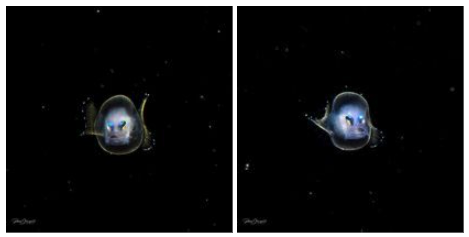On a nighttime dive on a spectacular shallow reef in Cozumel, Mexico, underwater photographer Robert Stansfield spied something in the inky darkness he had never seen before: a tiny, transparent fish with bright markings, devilish eyes, and a gaping mouth full of needle-sharp teeth. Blown away, Stansfield quickly snapped a photo and began a mission to figure out exactly what he had seen.
Stansfield reached out to OGL collaborator Simone Rossini, professional research diver and Divemaster at Careyitos Advanced Divers, to see if he knew anything about the fish. Like Stansfield, Rossini was baffled by the bizarre creature. So, he did what researchers often do: he searched for experts. Rossini sent the photo to OGL’s director Dan Distel, who passed it along to a chain of experts that eventually stretched from the Scripps Institution of Oceanography in San Diego to the National Museum of Natural History in Washington, D.C. All weighed in to try to solve the mystery.

Their consensus? The fish that Stansfield photographed is likely a larval whipnose anglerfish (Gigantactis sp.), normally a denizen of the deep sea! As adults, these fish are known for the impressive bioluminescent lure they use to attract prey. Larvae, like the one Stansfield found, don’t have a lure yet, but they boast a distinct pattern of yellow markings and have already started to develop an imposing set of teeth.

But what was this deep-sea fish doing in just 12 feet of water in a warm tropical reef? It turns out that when conditions are just right, currents can push deep water up towards the surface in a process called upwelling, sometimes bringing deep-sea larvae into shallow water. This phenomenon allows underwater photographers like Stansfield to observe species that few others have ever seen. OGL applauds citizen scientists like Stansfield and Rossini, who go the extra mile to help researchers learn about the anatomy and behavior of marine species.
We’re so glad they shared this photograph with us, and gave us the chance to share it with you. And of course, thanks to Charlotte Seid and Ben Frable (Scripps Institution of Oceanography), Carole Baldwin (National Museum of Natural History), and the many others who enthusiastically jumped in to help identify this amazing fish!
Interested in supporting cool marine science? Support OGL’s research here!
